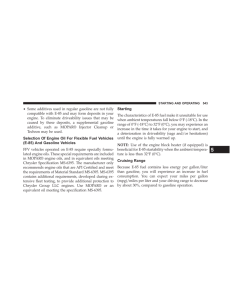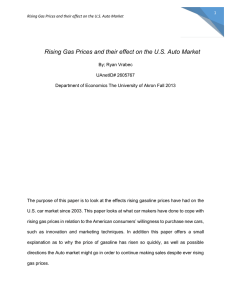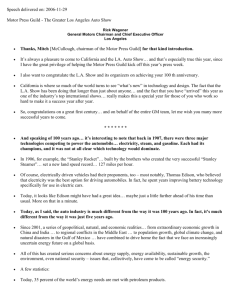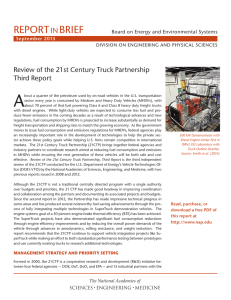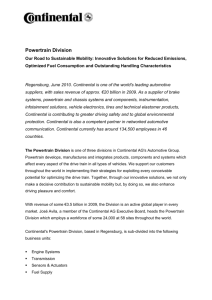Notes: Energy Efficiency
advertisement
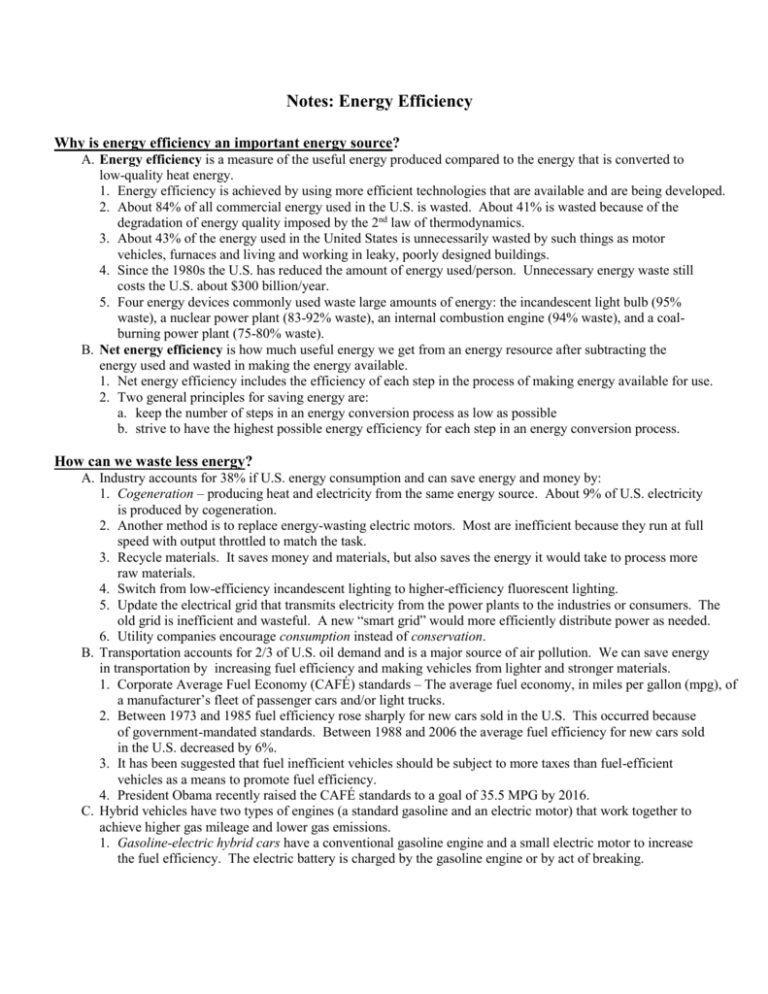
Notes: Energy Efficiency Why is energy efficiency an important energy source? A. Energy efficiency is a measure of the useful energy produced compared to the energy that is converted to low-quality heat energy. 1. Energy efficiency is achieved by using more efficient technologies that are available and are being developed. 2. About 84% of all commercial energy used in the U.S. is wasted. About 41% is wasted because of the degradation of energy quality imposed by the 2nd law of thermodynamics. 3. About 43% of the energy used in the United States is unnecessarily wasted by such things as motor vehicles, furnaces and living and working in leaky, poorly designed buildings. 4. Since the 1980s the U.S. has reduced the amount of energy used/person. Unnecessary energy waste still costs the U.S. about $300 billion/year. 5. Four energy devices commonly used waste large amounts of energy: the incandescent light bulb (95% waste), a nuclear power plant (83-92% waste), an internal combustion engine (94% waste), and a coalburning power plant (75-80% waste). B. Net energy efficiency is how much useful energy we get from an energy resource after subtracting the energy used and wasted in making the energy available. 1. Net energy efficiency includes the efficiency of each step in the process of making energy available for use. 2. Two general principles for saving energy are: a. keep the number of steps in an energy conversion process as low as possible b. strive to have the highest possible energy efficiency for each step in an energy conversion process. How can we waste less energy? A. Industry accounts for 38% if U.S. energy consumption and can save energy and money by: 1. Cogeneration – producing heat and electricity from the same energy source. About 9% of U.S. electricity is produced by cogeneration. 2. Another method is to replace energy-wasting electric motors. Most are inefficient because they run at full speed with output throttled to match the task. 3. Recycle materials. It saves money and materials, but also saves the energy it would take to process more raw materials. 4. Switch from low-efficiency incandescent lighting to higher-efficiency fluorescent lighting. 5. Update the electrical grid that transmits electricity from the power plants to the industries or consumers. The old grid is inefficient and wasteful. A new “smart grid” would more efficiently distribute power as needed. 6. Utility companies encourage consumption instead of conservation. B. Transportation accounts for 2/3 of U.S. oil demand and is a major source of air pollution. We can save energy in transportation by increasing fuel efficiency and making vehicles from lighter and stronger materials. 1. Corporate Average Fuel Economy (CAFÉ) standards – The average fuel economy, in miles per gallon (mpg), of a manufacturer’s fleet of passenger cars and/or light trucks. 2. Between 1973 and 1985 fuel efficiency rose sharply for new cars sold in the U.S. This occurred because of government-mandated standards. Between 1988 and 2006 the average fuel efficiency for new cars sold in the U.S. decreased by 6%. 3. It has been suggested that fuel inefficient vehicles should be subject to more taxes than fuel-efficient vehicles as a means to promote fuel efficiency. 4. President Obama recently raised the CAFÉ standards to a goal of 35.5 MPG by 2016. C. Hybrid vehicles have two types of engines (a standard gasoline and an electric motor) that work together to achieve higher gas mileage and lower gas emissions. 1. Gasoline-electric hybrid cars have a conventional gasoline engine and a small electric motor to increase the fuel efficiency. The electric battery is charged by the gasoline engine or by act of breaking. D. E. F. G. 2. A plug-in hybrid electric vehicle has a larger electric engine with small gasoline engine. The plug-in battery could be powered from the electricity in your home. If your electricity is produced by wind or solar you would get twice the mileage of current hybrid cars. 3. Electric vehicles (EV’s) are entirely electric and do not have a gasoline engine of any kind. 4. Sales of hybrid vehicles are projected to grow rapidly and could dominate sales by 2025. 5. Current obstacles to widespread use of hybrid-electric or electric vehicles is battery storage/range (about 100 miles) and the battery charging time (3-8 hours). We can save energy in new construction of building using green architecture. 1. Make use of passive solar heating, natural lighting, natural ventilation, rain water collection, cogeneration of heat/electricity, geothermal heat pumps, and recycled building materials 2. Living roofs or green roofs are covered with plants, provide good insulation, absorb storm water, outlast conventional roofs, and make a building more energy efficient. 3. A superinsulated house is another energy efficient design. They generally cost 5% more to build, but savings within 5 years pays this extra cost. In Sweden these homes use 90% less energy than a typical American home. 4. The U.S. Green Building Councils Leadership in Energy and Environmental Design (LEED) program established building standards with a silver, gold and platinum scoring system used by more and more architects, developers and elected officials in the U.S. We can save energy in existing buildings by: 1. Insulate and plug leaks since about 1/3 of heated air escapes through closed windows, holes and cracks. 2. Use energy-efficient windows to cut heat losses by 2/3 and reduce CO2 emissions. 3. Stop other heating and cooling losses by wrapping ducts in attics and basements. 4. Choose energy-efficient methods to heat space: a geothermal heat pump, passive solar heating, a high efficiency natural gas furnace 5. Heat water more efficiently by use of a tankless instant water heater fired by natural gas – NOT electricity. 6. Use energy-efficient appliances. 7. Use energy-efficient lighting; it could cut electricity costs by using compact fluorescent (CFL) bulbs. 8. Within 20 years we may be using even more efficient white-light LEDs (light-emitting diodes). Low-priced fossil fuels and few government tax breaks or other financial incentives for saving energy promote energy waste. 1. Government tax breaks and other economic incentives for consumers and businesses would help promote improving energy efficiency. 2. Invest in improving the energy efficiency of one’s home and within a few years the investment would be repaid and about 20% more money would be there for use. A variety of renewable-energy resources are available but their use has been hindered by a lack of government support compared to fossil fuels and nuclear power. Renewable energy is not being developed because there is no financial incentive to change to this type of energy. Types of renewable energy are solar, flowing water, wind, biomass, geothermal, and hydrogen.




